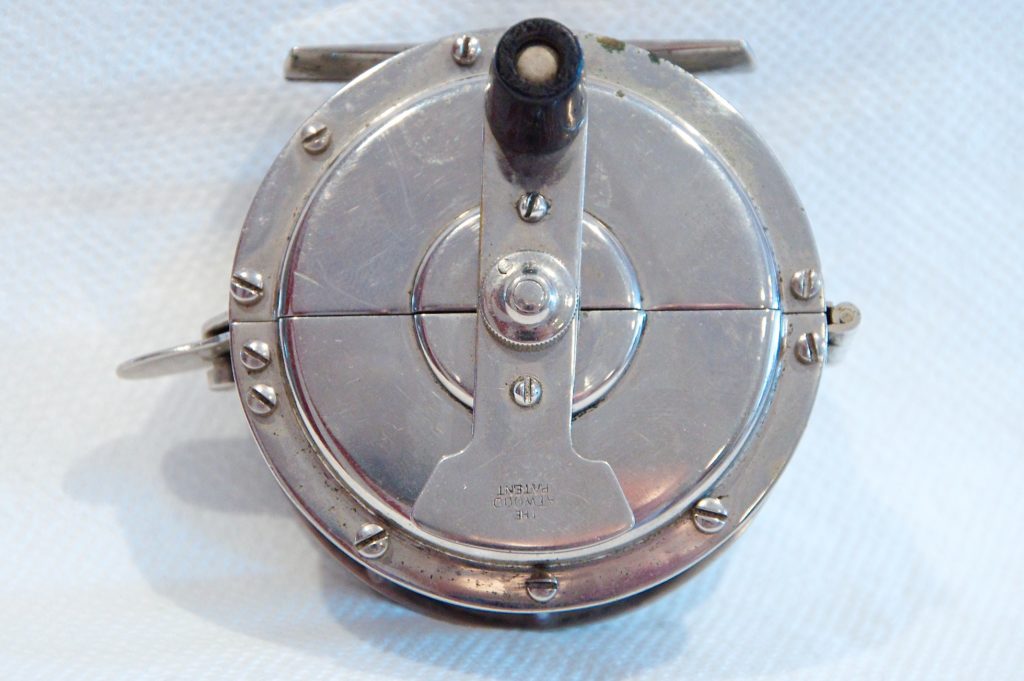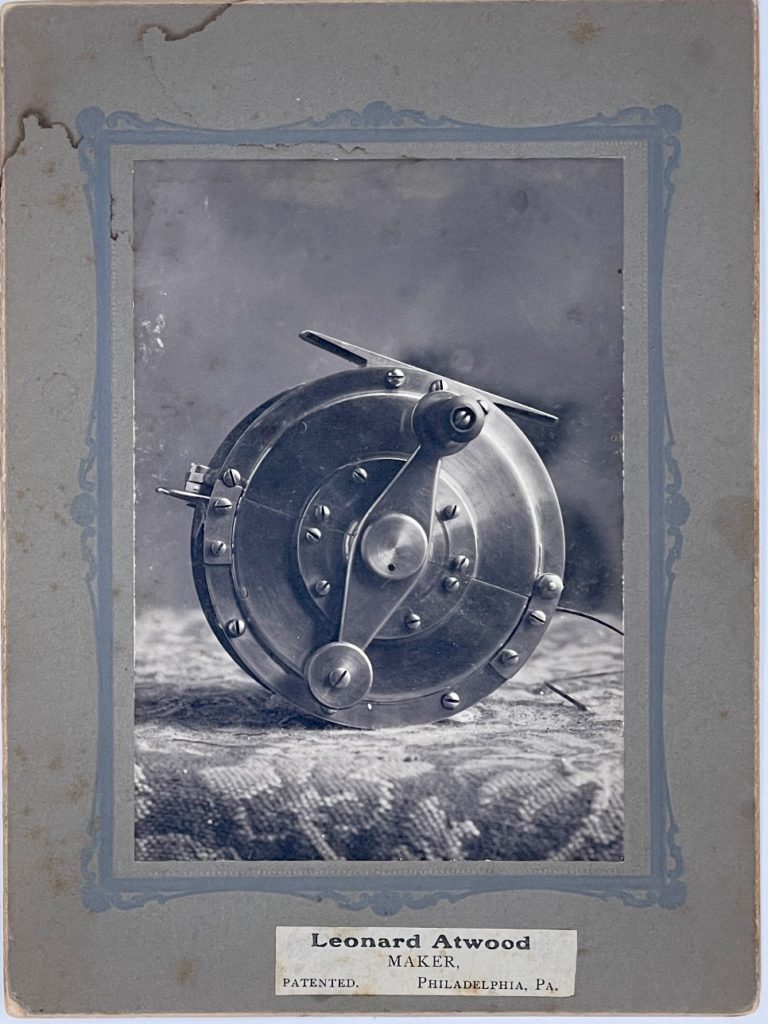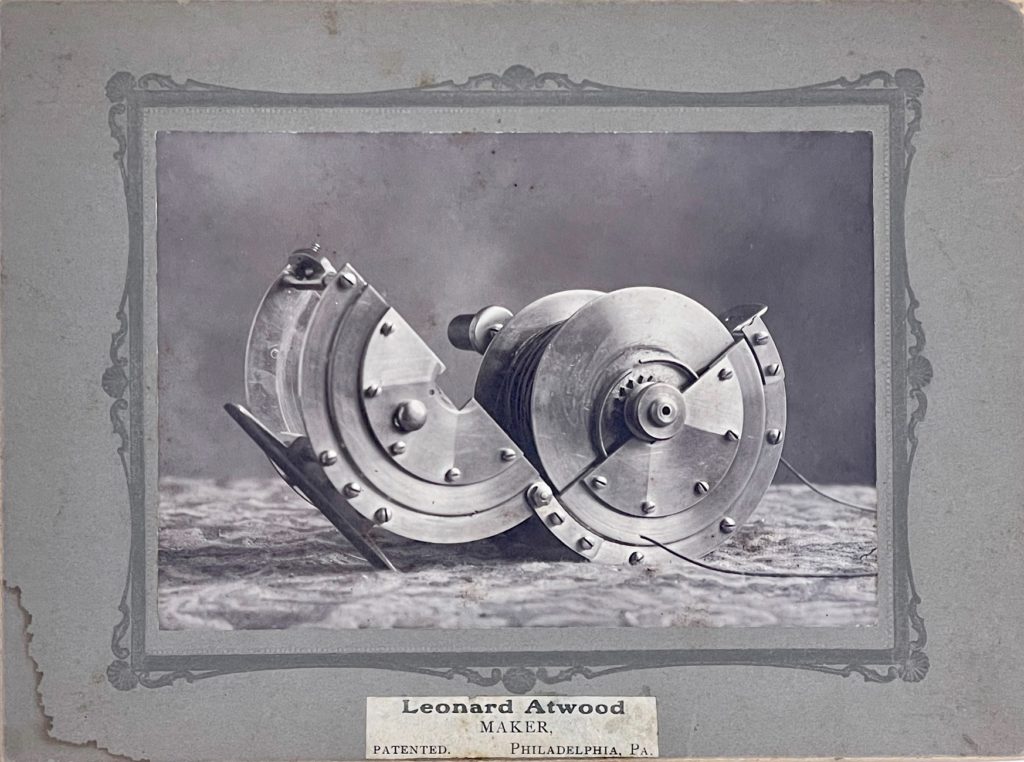
One of the more interesting and innovative inventors and designers of fishing reels was Leonard Atwood of Maine.
Atwood, with sixty-one patents filed in his name, was ultimately awarded patents for a wide variety of inventions. He is credited with building the first oil pipeline in the world, inventing the first practical elevator known at the time as a “vertical railway”. He installed the first elevators beginning in 1868 in a number of high buildings in New York City and in the U.S. Capital, eventually selling his patents and company to the Otis Elevator Co.

He also helped create the first modern geared fishing reel. Atwood’s patented Variable Tension Reel from 1907 used a prototype of a modern disc drag system, which was a great improvement over the existing click and pawl system used to control the tension of the line on the reel as the line was played out by a running fish.

One of his most unusual inventions was the split-frame reel with an elaborate hinged mechanism that allowed it to be oiled without being removed from the reel seat. Atwood was awarded a patent for this reel design in 1902.

There is only one known example of the hinged Atwood reel in a private collection and the only other record of this design is a series of cabinet card photos featuring what appears to be a second version of the reel.
Atwood’s other reels include a large salmon reel that weighed almost 18 ounces and a smaller trout version that was only 8 ounces. Even though he was awarded five reel patents from 1885 to 1920, his total actual production was less than 500 reels.
Steve Woit is the author of “Fly Fishing Treasures: The World of Fly Fishers and Collecting”, a book featuring profiles of 30 experts and collectors and over 800 photographs of rare and collectible fly rods, reels, flies, books, and ephemera.
The perfect gift for the holidays. Use special code MOLDY10 to get $10 off the cover price.






Built to last, or what?
For the past near five decades, whenever I have had a desk or a writing table to put the thing on, I have used a (very tarnished / patina-ed) brass, Carter & Co. London, 19th century salmon fly reel, given to me by the kid brother of a girl I was going out with back then, as a “Not even an industrial fan on Spinal Tap Volume Setting 11 could shift a piece of paper trapped beneath this” paperweight.
After reading “18 ounces” for Atwood’s total tank-trap above, I picked up the old Carter reel just now and, with some difficulty, walked it into my kitchen, where I placed on a digital cooking scale.
622 grams. That’s 1.37128 Imperial Pounds, or 21.94 ditto Ounces, I have just discovered thanks to an online converter.
Sheesh!
If Mr. Woit had read my book, “Antique Fishing Reels,” 2nd Edition, (https://www.antiquefishingreels.info/AFRad.html) he would have learned the following:
Atwood’s reel inventions did not include geared (multiplying) reels.
His most unusual reel was made with glass sideplates.
Atwood’s drags relied on simple clamping mechanisms that squeezed single-action reel components together against friction discs, already an old idea.
Another inventor had patented a similar split-frame reel in 1885, a generation before Atwood’s patent.
In addition: though “reputed” to have done so, Atwood did not build the world’s first oil pipeline.
Mr. Vernon:
Glad to be corrected on these points in my article on Atwood. One should always be careful about claiming who was “first” to do anything.
I did read the first edition of your book, which I enjoyed a great deal. It remains one the best books ever written on antique reels. I will look forward to reading the second as well!
My mistake. I forgot that Atwood made some multiplying reels. His 1907 drag patents described drags for single-action reels in which some drag components were in the spool arbors.